Kuala Lumpur
Kuala Lumpur is a diverse city, and in many ways is a microcosm of Asia. Malay, Chinese, Indian communities are all represented here, and simply walking down one street could land you in a totally different culture! This is the third instalment from my trip to the Malaysian capital in May of 2011.
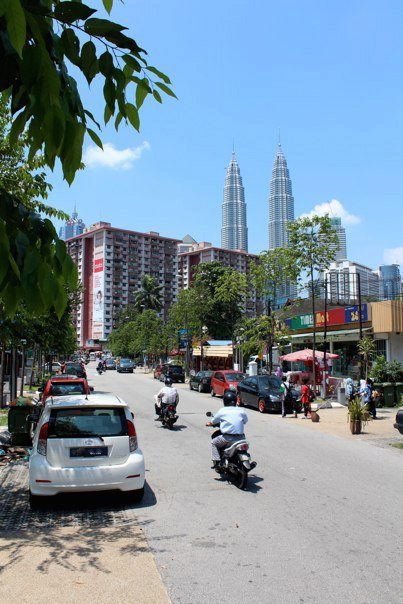
Old and new; Kampung Baru, Kuala Lumpur
One morning I decided to take a walk through Kampung Baru, an old area of Kuala Lumpur which has hardly seen any of the city’s modern development. Palm trees fringe the narrow streets, and wooden houses are set back from the road behind lush gardens. Headscarved girls walked to school in groups singing and giggling, while young men on motorbikes dodged them, weaving through the traffic on their way to work. Other sat around in streetside cafes, sipping tea lazily as the day’s heat built.
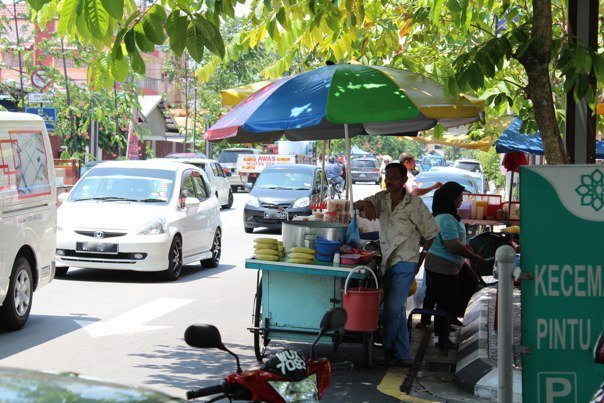
Street vendor in Kampung Baru, Kuala Lumpur
The smell of Malay curries wafted out of these canteens, and mixed with the smell of fried goods being sold on the street. Walking through this suburb felt like being in Indonesia, India or Pakistan again, and it was hard to believe that this could exist so close to the city centre. Having said that, it was not undeveloped – all the drains were covered, there was no begging and the houses were not dilapidated – but the contrast between Kampung Baru and central KL is fascinating nonetheless.
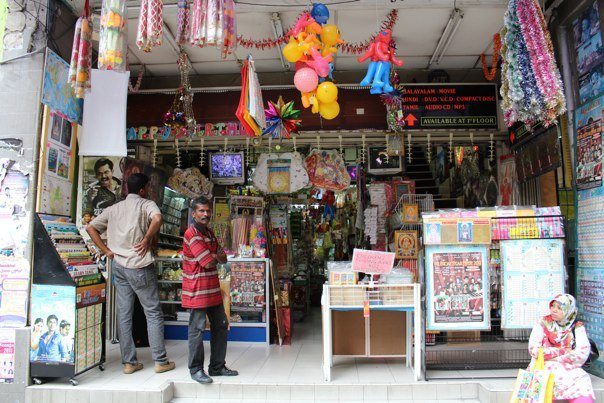
Little India shop in Kuala Lumpur
Later that day I took a walk across town through KL’s Little India and Chinatown. Setting off through dozens of colonial-era buildings which had been converted to fabric shops, I realized that KL also reminded me of Singapore in many ways, although that’s not surprising. The majority of Malaysia’s Indians are from South India, and the cuisine reflects this – no butter chicken here (that’s a northern dish), but instead idli (rice cakes) and dosas (stuffed savoury crepes) – both Chennai specialties. The squiggly Tamil script adorned buildings as I walked deeper into the suburb, and the sounds of Bollywood songs blared from shops I passed – Dabaang’s mega hit Munni Badnaam lives on in the sari shops of Kuala Lumpur.
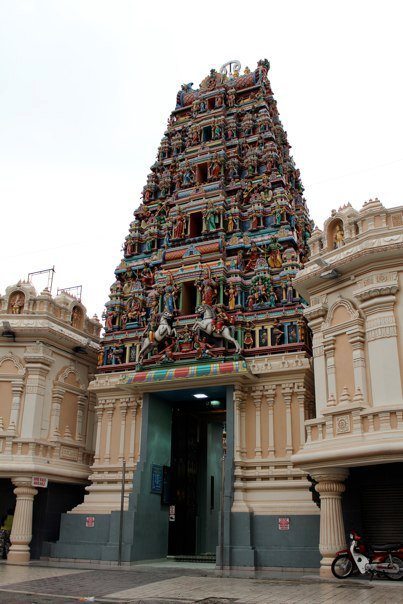
Sri Mahamariamman Temple, which is interestingly in Chinatown!
I walked on the Masjid Jamek (Friday Mosque), built at the meeting of KL’s two rivers, where the city was first founded. Built in traditional Malay style, the serene centre hall is finished in peaceful green and cream tiles. Outside of this, the tiled covered forecourt has no walls to allow the cool afternoon breeze to drift through.
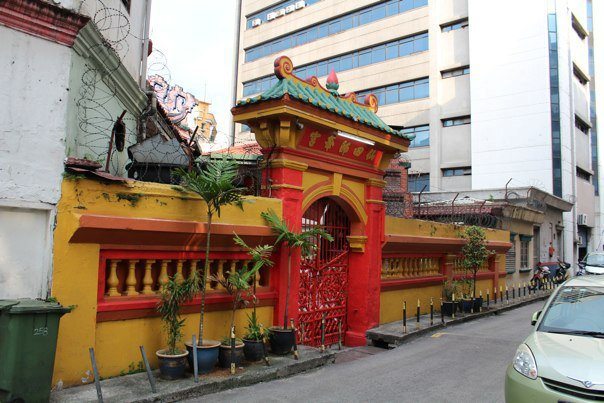
Sze Ya Temple, Chinatown, Kuala Lumpur, Malaysia. This location was apparently chosen because of its good feng shui…
The aroma of cooking spices gave way to the sweet smell of oriental sauces as I entered Chinatown. I stopped in at a couple of temples for some photos, and picked up some cheap (not pirated) software at a market before running for cover as the day’s storm engulfed the city. Standing under the awning of a mechanics workshop, I waited for what seemed an eternity for the rain to end – this was a particularly big storm. As I was waiting there, an old Indian man pulled up on his motorbike to escape the downpour. Muttering “bloody rain” in a thick accent, he offered me a cigarette as we waited. With a kind smile, he introduced himself as Bala. To me – this is perhaps what defines Malaysia the most – the people are among the friendliest I’ve met in all my travels. Regardless of their background, the Malaysian people have constantly surprised me with their wide smiles and kind nature.
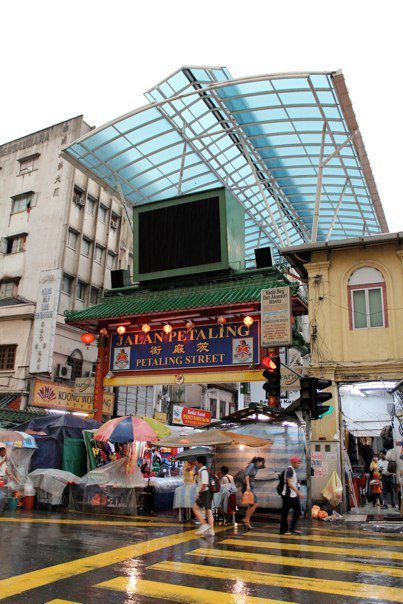
Petaling Street market in Kuala Lumpur
Eventually making a dash through the rain, I ended up at Petaling Street, KL’s answer to everything wrong with Thailand. After battling through salespeople throwing their counterfeit wares in my face, I sat down for dinner. While at Petaling Street, I discovered what happens when a covered bazaar is hit by a freak thunderstorm. As the storm intensified, it felt like the roof of the market was going to lift off. Water poured in from every conceivable location.
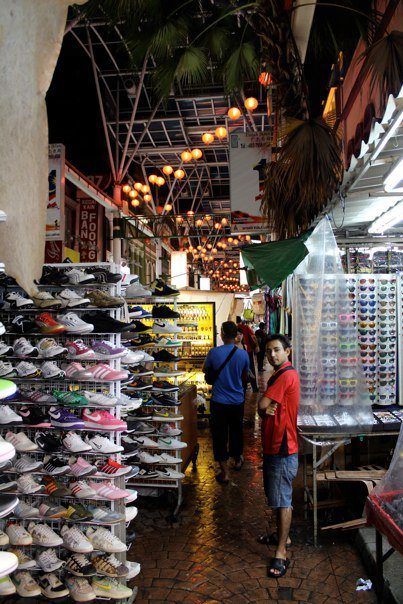
Petaling Street market in Kuala Lumpur
Four young Australian tourists caused a bit of commotion when they walked through the rain in their revealing tops, asking aloud “Why is everyone looking at us? Are we famous?”. There are definitely ways of deflecting male attention in Asia, and they don’t include walking through the rain in a white tank top. On the other hand, the whistling vendors surely didn’t understand the lyrics to the music they were playing – if anyone has forgotten Khia’s “My Neck, My Back”, here’s a refresher, and just a warning, it’s not for work – http://www.youtube.com/watch?v=3J0utfYWJvg.
Essential Stats
Culture shock: 5/10
Language difficulty: 6/10
Quality of food: 9/10
Cost: 6/10
Physical demand: 5/10 – Kuala Lumpur is not an ‘active’ destination, but walking across the city through the heat definitely requires a bit of energy.
Advice and warnings
Kuala Lumpur is a remarkably safe city. Keep a close eye on your valuables, be aware of pickpockets, especially in crowded places and use common sense, and you should be fine! Remember that although Malaysia is fairly liberal by Asian standards, it’s still a Muslim country and you should take care not to offend.
Check Smart Traveller or the British Foreign Office for more comprehensive warnings.
Visas
Australians may enter Malaysia with a visit permit on arrival valid for stays of up to 90 days. Pakistanis must apply for a visa at the Malaysian High Commission in Islamabad – the process takes around a week and costs PKR 1,450 – the process is much easier if you use a travel agent. Indians can apply through the VFS Global service – the visa costs INR 1,000 and takes around a week to process.
Getting there and around
From Melbourne, Sydney and Chennai, Malaysia Airlines flies to Kuala Lumpur directly.
Melbourne (from $724 return)
Sydney (from $739 return)
Chennai (from INR 23,459 return)
From Lahore, Pakistan International flies from Lahore to Kuala Lumpur via Karachi, while the return flight operates directly. Tickets start from PKR 63,988.
Accommodation
We stayed at the luxurious Sheraton Imperial Kuala Lumpur, and then later had a couple of nights at the Le Meridien Kuala Lumpur Sentral, also very lovely! If you’re looking for something a bit easier on the wallet, there are plenty of great budget and economy options available through HostelWorld.com.
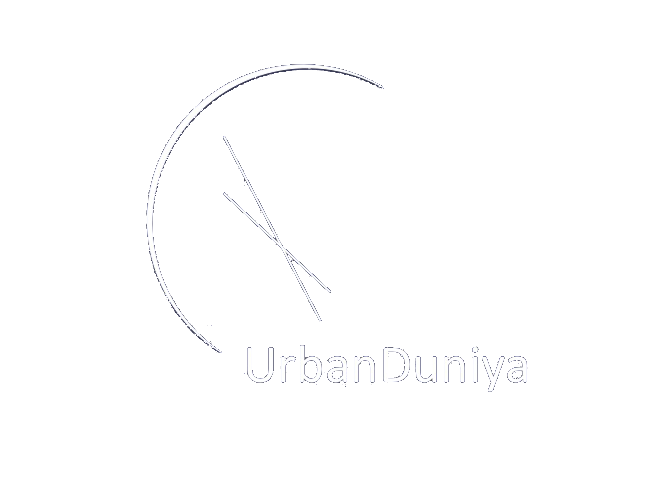
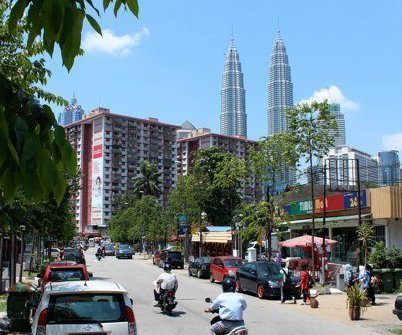
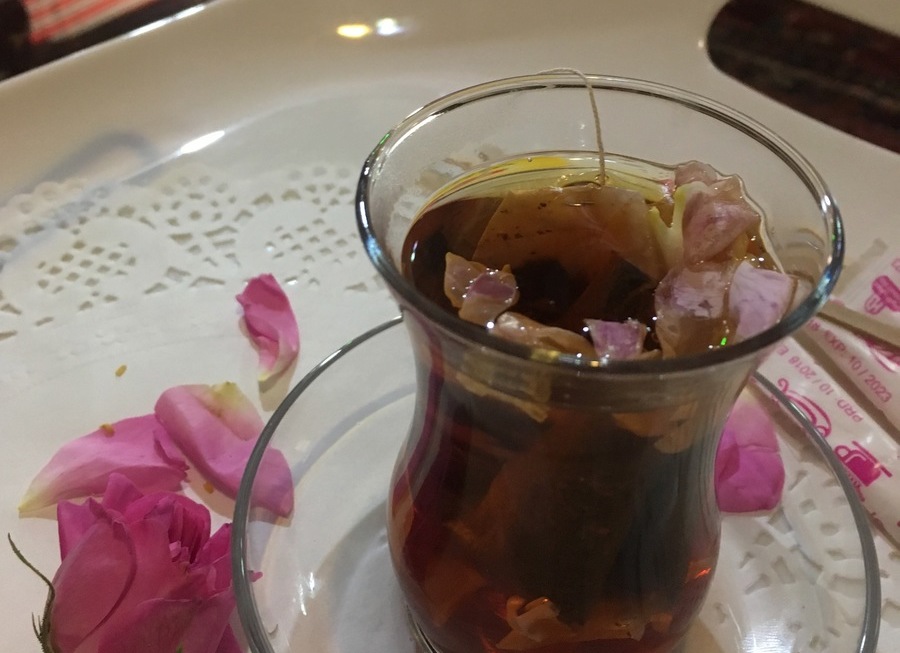


Different people with different backgrounds, but with kind natures. On top of that a beautiful land. That’s why it’s called Malaysia truly Asia, I guess?
I guess so! It’s a great place 🙂 Thanks for reading Wajid 🙂
I’m heading back to KL soon and this post got me so excited! I’m also planning on going to Pakistan via Malaysia in the winter and had thought cheapest would be flying to Delhi and going overland, but maybe I should check out Pakistan International!
Great – hope you have an awesome time!!! Tell us about it!!
You might still be right about Delhi and then going overland – SE Asian budget airlines haven’t made it to Pakistan yet, so you might still find it cheaper.
Don’t forget that with very few exceptions, Pakistani visas can’t be issued to travellers in a third country – you will usually have to apply through the Pakistani mission in your country, regardless of where in the world you are.
Happy travelling – and good luck!